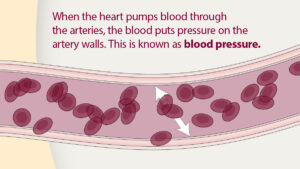Heart Failure
- Complex clinical syndrome resulting in insufficient blood supply/oxygen to tissues and organs
- Involves diastolic or systolic dysfunction
- Ejection fraction (EF) is amount of blood pumped by LV with each heart beat
- Associated with CVDs
- Increase in incidence and prevalence
- Most common cause for hospital admission in adults over age 65
Risk factors
- Primary risk factors
- Hypertension
- Modifiable risk factor
- Properly treated and managed, incidence of HF can be reduced by 50%
- CAD
- Hypertension
- Co-morbidities contribute to development of HF
Etiology of Heart failure
- Anything that interferes with mechanisms that regulate cardiac output (CO)
- Primary causes
- Conditions that directly damage the heart
- Hypertension, including hypertensive crisis
- Coronary artery disease, including myocardial infarction
- Rheumatic heart disease
- Congenital heart defects (e.g., ventricular septal defect)
- Pulmonary hypertension
- Cardiomyopathy (e.g., viral, postpartum, substance abuse)
- Hyperthyroidism
- Valvular disorders (e.g., mitral stenosis)
- Myocarditis
- Conditions that directly damage the heart
- Precipitating causes
- Conditions that increase workload of ventricles
|
Cause |
Mechanism |
|
Anemia |
Decrease O2-carrying capacity of the blood stimulating Increase in CO to meet tissue demands, leading to increase in cardiac workload and increase in size of LV |
|
Infection |
Increased O2 demand of tissues, stimulating increase CO |
|
Thyrotoxicosis |
Changes the tissue metabolic rate, increased HR and workload of the heart |
|
Hypothyroidism |
Indirectly predisposes to increased atherosclerosis. Severe hypothyroidism decreases myocardial contractility. |
|
Dysrhythmias |
May decreased CO and increased workload and O2 requirements of myocardial tissue |
|
Bacterial endocarditis |
Infection: increased metabolic demands and O2 requirements Valvular dysfunction: causes stenosis or regurgitation |
|
Obstructive sleep apnea |
Frequent nighttime apnea results in increased afterload, intermittent hypoxia, and increased sympathetic nervous system activity. |
|
Pulmonary embolism |
Increased pulmonary pressure resulting from obstruction leads to pulmonary hypertension, decreased CO. |
|
Paget’s disease |
Increased workload of the heart by increased vascular bed in the skeletal muscle |
|
Nutritional deficiencies |
May decrease cardiac function by increased myocardial muscle mass and myocardial contractility |
|
Hypervolemia |
Increased preload causing volume overload on the RV |




